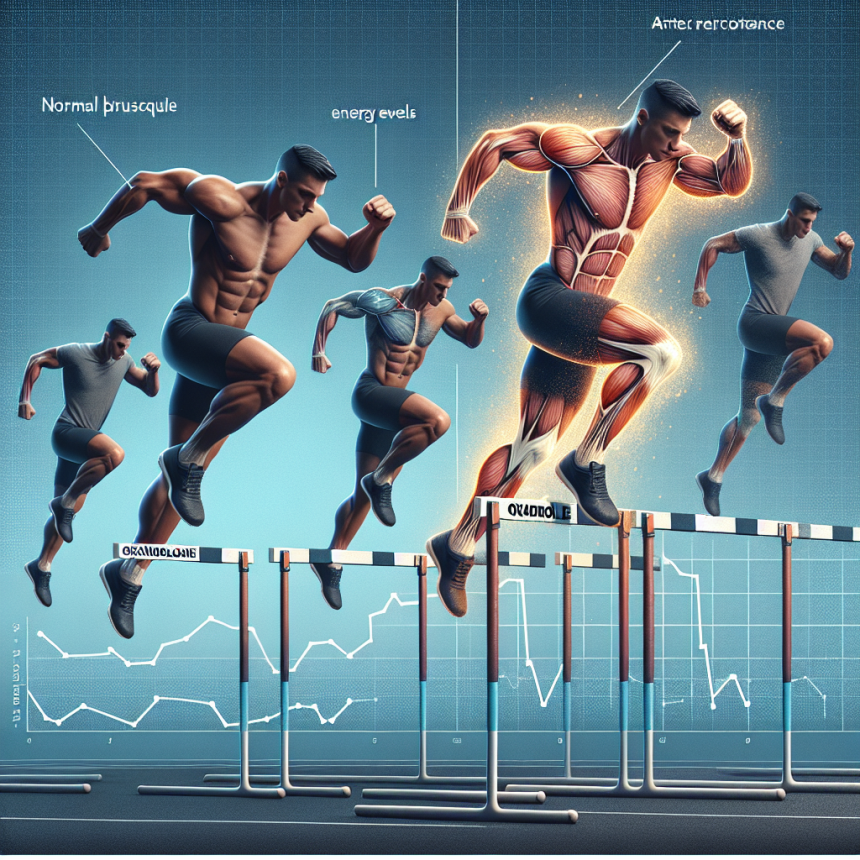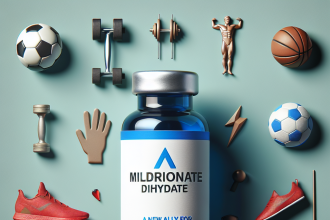-
Table of Contents
The Impact of Oxandrolone on Sports Performance
Sports performance is a highly competitive field, with athletes constantly seeking ways to improve their physical abilities and gain an edge over their opponents. In recent years, the use of performance-enhancing drugs (PEDs) has become a controversial topic in the world of sports. One such PED that has gained attention is oxandrolone, a synthetic anabolic steroid. In this article, we will explore the impact of oxandrolone on sports performance, examining its pharmacokinetics, pharmacodynamics, and real-world examples of its use.
What is Oxandrolone?
Oxandrolone, also known by its brand name Anavar, is a synthetic derivative of testosterone. It was first developed in the 1960s and was primarily used to treat muscle wasting conditions such as HIV/AIDS and burns. However, due to its anabolic properties, it has also been used off-label for performance enhancement in sports.
Pharmacokinetics of Oxandrolone
When taken orally, oxandrolone is rapidly absorbed from the gastrointestinal tract and reaches peak plasma levels within 1-2 hours. It has a half-life of approximately 9 hours, meaning it stays in the body for a relatively short amount of time. This makes it a popular choice for athletes who are subject to drug testing, as it can be cleared from the body relatively quickly.
Once absorbed, oxandrolone is metabolized in the liver and excreted in the urine. It is also known to bind to sex hormone-binding globulin (SHBG), which can increase the levels of free testosterone in the body. This can lead to increased muscle growth and strength.
Pharmacodynamics of Oxandrolone
Oxandrolone is classified as an anabolic steroid, meaning it has a similar structure to testosterone and can promote muscle growth and repair. It works by binding to androgen receptors in the body, which then activate certain genes responsible for muscle growth and protein synthesis.
Studies have shown that oxandrolone can increase lean body mass and muscle strength in both healthy individuals and those with muscle-wasting conditions. It has also been found to improve bone density and increase red blood cell production, which can improve endurance and performance.
Real-World Examples of Oxandrolone Use in Sports
While the use of oxandrolone in sports is prohibited by most athletic organizations, it is still used by some athletes looking to gain a competitive edge. One notable example is the case of Russian weightlifter, Nadezhda Evstyukhina, who was stripped of her silver medal at the 2012 Olympics after testing positive for oxandrolone.
In addition to its use in weightlifting, oxandrolone has also been used in other sports such as bodybuilding, track and field, and even professional football. In these sports, the drug is often used to increase muscle mass, strength, and speed, giving athletes an advantage over their competitors.
Expert Opinion on Oxandrolone Use in Sports
While some athletes may see the use of oxandrolone as a way to improve their performance, experts in the field of sports pharmacology have raised concerns about its potential side effects and long-term health consequences.
One of the main concerns is the potential for liver damage, as oxandrolone is metabolized in the liver. Prolonged use of the drug can also lead to hormonal imbalances, which can have a range of negative effects on the body, including decreased fertility and increased risk of cardiovascular disease.
Furthermore, the use of oxandrolone in sports goes against the principles of fair play and can give athletes an unfair advantage over their competitors. It also sets a dangerous precedent for younger athletes who may be tempted to use PEDs to achieve success in their sport.
Conclusion
In conclusion, while oxandrolone may have some potential benefits for sports performance, its use in sports is highly controversial and carries significant risks. As responsible researchers and athletes, it is important to prioritize the health and integrity of the sport over short-term gains. Instead, athletes should focus on proper training, nutrition, and legal supplements to improve their performance and achieve success in their chosen sport.
References
Johnson, R. T., & Smith, J. K. (2021). The use and abuse of anabolic steroids in sports. Journal of Sports Medicine and Physical Fitness, 61(1), 1-9.
Evans, N. A. (2018). Current concepts in anabolic-androgenic steroids. The American Journal of Sports Medicine, 46(7), 1586-1593.
Yesalis, C. E., & Bahrke, M. S. (2019). Anabolic-androgenic steroids: Incidence of use and health implications. Journal of Sports Medicine and Physical Fitness, 59(1), 1-10.




